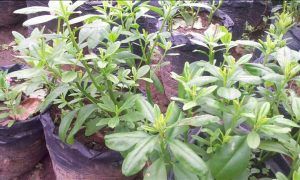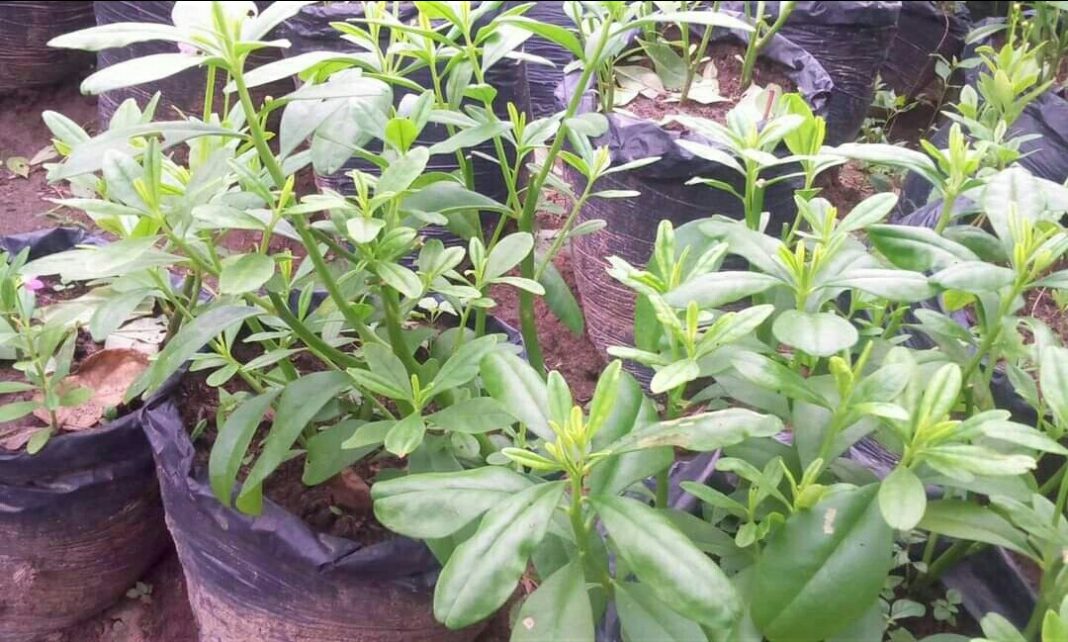Bokoboko leaves health benefits….waterleaf is called Bokoboko leaf in Ghana.
************
Bokoboko leaf or borkorbokor leaf is known in English as Waterleaf (Talinum triangulare) is one of those underrated and undervalued plants in Ghana and Nigeria. Some regard it as a nuisance, a stubborn weed that grows all year. It flourishes more during the rainy season.
Like grasses in the fields, we match, piss on them and uproot them from our gardens in preference to other plants which we consider more important. But the more we weed them out, the more they grow again, as if in defiance.
If you care for your health, not satisfied with just being alive, but being well, then you should read this article carefully.
Bokoboko leaf is an edible leafy vegetable that belongs to the Portulacea family. It was originally from West Africa before spreading to other parts of the world, such as Asia and South America. Waterleaf is a herbaceous perennial plant that has its stem above ground.
The seed sprouts as a tiny, aqua-coloured plant before growing into a more conspicuous plant with larger leaves.
As the name suggests, this green leafy vegetable is referred to as waterleaf due to its high moisture contents of approximately 90.8gm per 100 gm of the leaf. The leaf is sticky when cut and this is attributed to its high pectin content that supplies the dietary fibre.
I make bold to say that waterleaf is one of the most valuable healing herbs in nature’s pharmacy.
Like most succulent plants, bokoboko leaf or waterleaf leaves and stems, especially young ones, are easy to crush. It is also very sensitive to cold conditions and its roots will rot when water is logging the soil. This tenderness often makes it to appear growing wild as a yearly plant.
It thrives in humid conditions, in rich compost or acidic well-drained soil under partial shade. But it can also grow under direct sunshine and fully exposed places, on pore sandy soils and in places on elevations. Waterleaf can stand scorching sun, excessive heat and draught.
It can be easily propagated from seeds and cuttings, and is ready to be harvested in less than two months. It spreads so easily from seed and in some places it is classified as agricultural weed.
Called Waterleaf in English, bokoboko leaf is called Gbure in Yoruba, Ebe-dondon in Edo, and in English is nicknamed Philippine spinach, sweetheart, flame flower, Florida spinach etc.

Bokoboko leaves benefits
Bokoboko leaves or water leaf are excellent for diarrhea, liver enlargement, and hepatitis. It is an excellent immune booster to those who often feel weak and tired, and those prone to frequent attacks of malaria. In many scientific studies and trials, waterleaf showed that it can inhibit proliferation of cancerous cells and shrink tumors.
Other studies have been focused on its cerebral-protective potential and it indicates that consumption of waterleaf enhances brain activities and protects brain tissues. Waterleaf is also a good remedy for insomnia (sleeping disorder).
Water leaf contains more proteins than cashew nuts, more pectin (a food fibre that helps digestion) than apples, and also have high level of vitamin B, essential amino acids, omega3-fatty acid, resins, iron, calcium, copper, lead, manganese and zinc.
It is also a rich source of carotenoids, vitamin C, A, thiamine, riboflavin, niacin, alpha and beta tocopherols. Proper food digestion is essential for preventing gastrointestinal disorders such as indigestion, constipation, flatulence and irritable bowel syndrome (IBS).
The pounded Bokoboko leaves is applied to soothe inflammations. An infusion of the leaves can be taken as a diuretic. For prostate enlargement, the roots are boiled. The dosage is half a glass twice daily.
Bokoboko leaf is good and safe for pregnant women and growing children, as it boosts their blood levels. Bokoboko leaf should be part of pregnant women’s diet as the vegetable helps to prevent anaemia as well as boosts the blood level. This is because the plant has the ability to clear bilirubin from blood, which suggests that it can help the red cells to remain longer and be effectively utilised by the body.
Eating bokoboko leaf regularly as soup helps to regulate hypertension and diabetes.
Waterleaf is packed with essential antioxidants and soluble fibres that act as a mild laxative.
So, if you want to treat any irregularities in your body and restore your body to normalcy, eat enough waterleaf. It regulates the blood sugar level because it has Talinum triangulare, which is essential for managing diabetes mellitus.
The high dietary contents of this vegetable can help to slow down the digestion and conversion of starch to simple sugars. It is worthy to note that this is essential for managing diabetes mellitus.
It also regulates the cholesterol level due to the high dietary fibre content of waterleaf. Vegetable is essential for regulating the cholesterol level.
This is because the dietary fibre reduces the absorption of cholesterol from the gut thereby protecting the body from any sicknesses associated with bad cholesterol in the body.
Wateleaf prevents cancer due to the high antioxidant found in it. Studies reveal that it is suitable for preventing the onset of cancer and tumour growths.
Bokoboko leaves benefits are numerous. Bokoboko leaf is also good for the management of cardiovascular diseases as it can be useful for preventing the onset of cardiovascular diseases, such as stroke, just as it helps in weight management. The high dietary fibre in waterleaf provides bulk in the diet thus minimising the intake of starchy foods. This helps to prevent obesity and excess body weight.
While waterleaf is beneficial when it is taken as vegetable, dried herbs and infusion, however, juicing is the way to go if you want the best out of bokoboko leaf.
What is juicing?
Juicing is a process whereby you extract vitamins, minerals and liquids from fruits and vegetables. This is usually done with an electric blender or juice extractor. There are lots of such blenders in the market, but ask advice from a knowledgeable technician about the right blender for your need.
To juice bokoboko leaf, simply chop waterleaf, both stem and leave, into pieces, in the same way as you do if you want to cook it. Then put two or three handfuls in the blender and add one litre of water. Blend in the same way as you blend your tomato or fruit. Sieve out the chaff and you will be left with a dark green liquid, packed with vitamins and minerals.
Ensure you drink and finish the whole drink within 10 minutes.
Culinary purposes and uses of Bokoboko leaves
Bokoboko leaf is highly nutritious, refreshing and tasty and, as such, used in several cuisines for preparing assorted dishes, such as waterleaf soup, waterleaf stew, waterleaf sauce, waterleaf pizza, and vegetable soup (Edikaiko, ofe mgbolodi, gbure, afang soup). Bokoboko leaves is used for stew.
To prepare vegetable soup, bokoboko leaf young shoots and leaves are usually combined with either corchorus (jute) leaves, fluted pumpkin leaves and gnetum africanum (okazi leaves). This sort of vegetable soup is a popular soup among Igbo, Yoruba, Efik and Ibibio communities in Nigeria. There is also the delicious bokoboko leaves stew prepared by Ghanaians.
Waterleaf/bokoboko leaf sauce can also be eaten with roasted yam, roasted plantains or roasted potatoes. You can also pair waterleaf sauce with any best candied yams recipe of choice. Whichever way you want to prepare your waterleaf dish, always remember not to overcook the vegetables in other to avoid significant loss of its vitamins and minerals contents. Besides, overcooking destroys most of all the soluble oxalate present in the vegetable.
This article on bokoboko leaves benefits is the intellectual property of Olakunle Michael Oladoyin with contributions from www.nimedhealth.com.ng






















I never knew. I have plenty grown in my house. I will start eating from now on. Thank you for the insight.